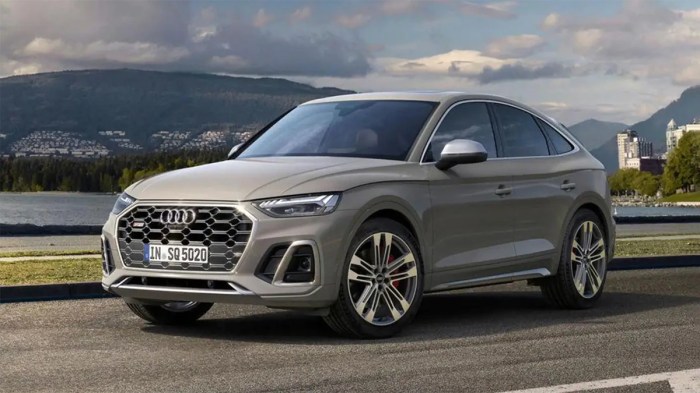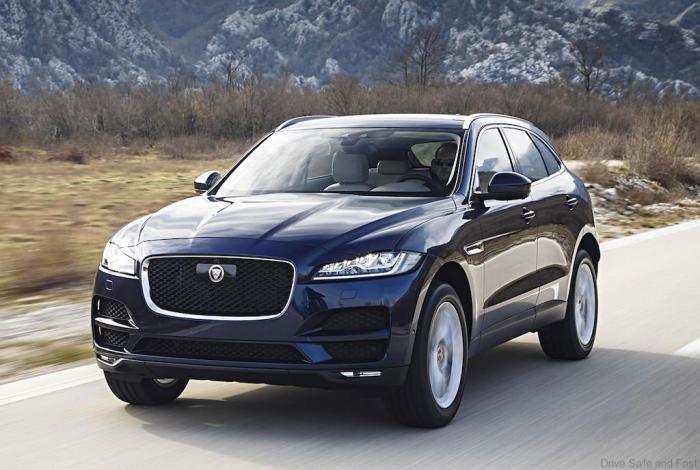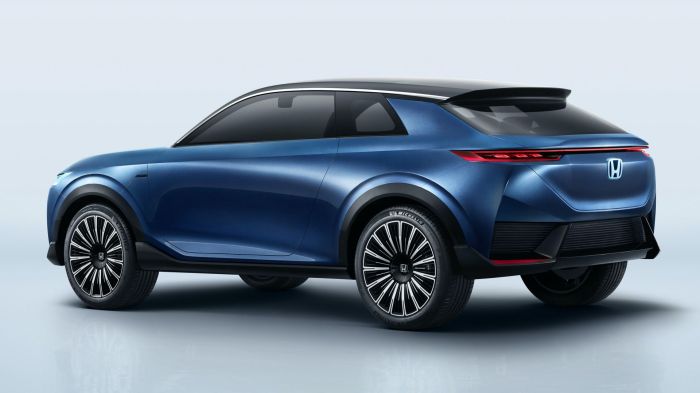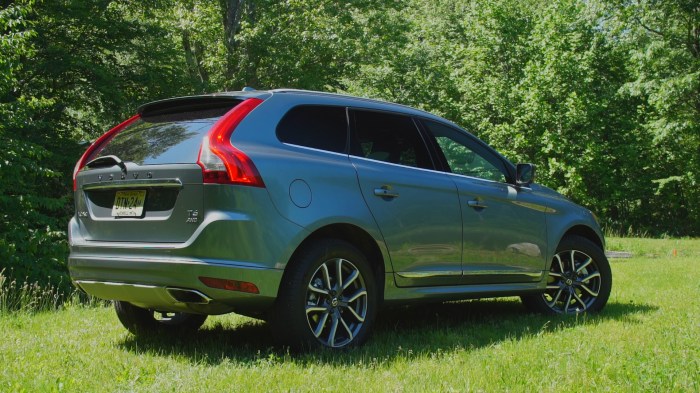mb gle sets the stage for this enthralling narrative, offering readers a glimpse into a story that is rich in detail with idntimes author style and brimming with originality from the outset. The Mercedes-Benz GLE model line has long been synonymous with luxury, performance, and cutting-edge technology. Since its inception, the GLE has undergone a remarkable evolution, consistently adapting to the changing demands of drivers while maintaining its distinctive identity.
From its key features to the variety of trims available, the GLE represents a pinnacle of automotive excellence that appeals to discerning consumers.
Overview of the Mercedes-Benz GLE Model Line
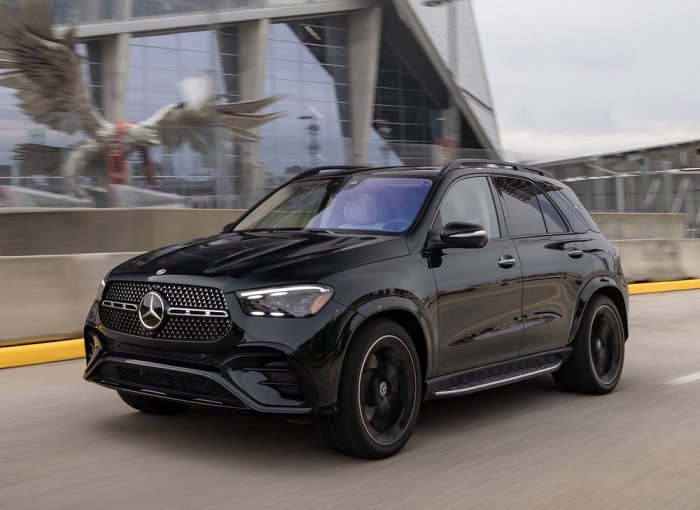
The Mercedes-Benz GLE model line represents a significant evolution in the realm of luxury SUVs, embodying a blend of performance, technology, and opulence. Introduced initially as the M-Class in 1997, the GLE has undergone substantial transformations, adapting to changing consumer preferences and advancing automotive technologies, ultimately rebranding as the GLE in 2015. This vehicle not only emphasizes comfort and sophistication but also integrates cutting-edge features that cater to the modern driver’s needs.The GLE series is defined by its robust design, spacious interior, and an array of performance-oriented features.
For individuals seeking a blend of power and practicality, the suv is increasingly becoming the go-to choice. These vehicles provide ample cargo space and higher ground clearance, making them perfect for tackling rough terrains. On the other hand, if you are looking for something compact and fuel-efficient, a car might just fit the bill perfectly, especially for urban commuting and daily errands.
Mercedes-Benz has meticulously crafted the GLE to appeal to a diverse audience, offering a variety of trims that cater to different tastes and requirements. With a rich history and a forward-looking perspective, the GLE continues to set benchmarks within the luxury SUV segment.
History and Evolution of the GLE
The journey of the GLE began with the introduction of the M-Class, which was designed to compete in the emerging luxury SUV market. Over the years, the M-Class evolved through several generations, addressing consumer demands for enhanced performance and luxury. In 2015, Mercedes-Benz rebranded the M-Class as the GLE-Class, aligning it with the company’s new naming strategy, which emphasizes the SUV’s position within the broader lineup.The GLE has consistently represented Mercedes-Benz’s commitment to innovation, introducing features such as the AIRMATIC air suspension system, a customizable ambient lighting system, and advanced driver assistance technologies.
Each iteration of the GLE has reflected a balance between power and luxury, maintaining the brand’s reputation for engineering excellence.
Key Features of the GLE Series
Several key features define the GLE series, making it a standout in the competitive luxury SUV market. These features include:
- Performance: The GLE is available with a range of powerful engines, including inline-6 and V8 options, delivering exhilarating performance and smooth acceleration. The AMG GLE versions take this performance a step further with enhanced power and handling.
- Interior Comfort: The GLE boasts a spacious interior with high-quality materials and advanced technology. Comfortable seating, ample legroom, and an intuitive infotainment system provide a premium experience for both drivers and passengers.
- Safety Technologies: With a comprehensive array of safety features, including adaptive cruise control, lane-keeping assist, and active brake assist, the GLE prioritizes the safety of its occupants. These technologies leverage advanced sensors and AI to enhance driving safety.
Trims Available within the GLE Lineup
The GLE lineup offers a variety of trims, each tailored to meet different customer preferences and driving needs. The primary trims include:
- GLE 350: This base model features a turbocharged four-cylinder engine and an array of standard luxury amenities, providing an excellent entry point into the GLE lineup.
- GLE 450: Offering more power with an inline-six engine, the GLE 450 includes additional performance features and upgraded technology options.
- GLE 580: This trim enhances the driving experience with a powerful V8 engine and luxurious interior upgrades, making it suitable for those seeking maximum performance and comfort.
- AMG GLE 53: Combining sporty performance with luxury, the AMG GLE 53 features a more aggressive styling and enhanced driving dynamics, appealing to enthusiasts.
- AMG GLE 63 S: The pinnacle of the GLE lineup, this trim delivers outstanding performance with a high-output V8, advanced suspension systems, and exclusive design elements.
“The GLE not only signifies a commitment to luxury and technology but also showcases Mercedes-Benz’s dedication to performance and safety.”
Performance and Engine Options
The Mercedes-Benz GLE model line stands out not only for its luxury and comfort but also for its impressive performance capabilities. With a range of engine options, the GLE caters to diverse driving preferences, combining power, efficiency, and cutting-edge technology. This overview will delve into the various engine choices available for the GLE, including specifications, performance metrics, and fuel efficiency ratings, alongside the benefits of hybrid and electric variants.
When it comes to finding the perfect vehicle, many people are drawn to the versatility of a car. Cars provide a great balance of comfort, efficiency, and style, making them ideal for both city driving and longer trips. However, for those who prioritize space and off-road capability, exploring options like an suv can be a game changer, offering a robust solution for families and adventurers alike.
Engine Choices and Performance Metrics, Mb gle
The Mercedes-Benz GLE offers several engine options, each designed to provide a unique driving experience. The range includes:
- GLE 350 4MATIC: Equipped with a 2.0-liter turbocharged inline-4 engine, it produces 255 horsepower and 273 lb-ft of torque. This engine allows the GLE to accelerate from 0 to 60 mph in just 7.0 seconds.
- GLE 450 4MATIC: This variant features a 3.0-liter inline-6 turbo engine with EQ Boost, generating 362 horsepower and 369 lb-ft of torque. It achieves 0 to 60 mph in approximately 5.5 seconds.
- GLE 580 4MATIC: Powered by a 4.0-liter V8 twin-turbo engine, it delivers a staggering 483 horsepower and 516 lb-ft of torque. The acceleration from 0 to 60 mph occurs in a remarkable 4.9 seconds.
- GLE 300de (Plug-in Hybrid): This hybrid option combines a diesel engine with an electric motor, producing a total system output of around 320 horsepower, delivering both efficiency and power.
The performance metrics of these engines demonstrate the GLE’s capability to cater to both efficiency-seeking drivers and those in pursuit of performance.
Fuel Efficiency Ratings
The fuel efficiency ratings of the GLE engine options vary, reflecting the balance between power and economy. The following Artikels the EPA estimates for each variant:
- GLE 350 4MATIC: Offers an estimated fuel economy of 21 mpg in the city and 26 mpg on the highway.
- GLE 450 4MATIC: Provides an estimated 19 mpg in the city and 24 mpg on the highway.
- GLE 580 4MATIC: Shows a rating of approximately 17 mpg in the city and 22 mpg on the highway.
- GLE 300de (Plug-in Hybrid): Achieves an impressive estimated fuel economy of 50 MPGe when combining electric and gasoline use.
These ratings indicate that the GLE not only offers thrilling performance but also maintains commendable fuel efficiency, particularly with the hybrid option.
Hybrid and Electric Options
Mercedes-Benz has also embraced hybrid and electric technologies within the GLE lineup. These options provide unique benefits for environmentally conscious drivers while delivering impressive performance.The GLE 300de, as a plug-in hybrid, combines the benefits of an electric motor with a conventional engine, allowing drivers to enjoy electric-only driving for shorter distances, reducing fuel consumption and emissions. With a total range that combines gasoline and electric driving, it represents a sustainable choice without sacrificing power.The shift towards hybrid and electric powertrains in the GLE line enhances its versatility and appeal, particularly in urban environments where emissions regulations are becoming stricter.
The integration of advanced battery technology ensures that drivers can experience the luxury and performance expected from Mercedes-Benz, alongside a commitment to sustainability.Overall, the performance and engine options available for the GLE model line exemplify a perfect blend of power, efficiency, and innovation, catering to a wide range of driving preferences and environmental considerations.
Interior Comfort and Technology
The Mercedes-Benz GLE stands out with its luxurious interior that blends comfort with cutting-edge technology. Inside, the GLE exemplifies attention to detail, with a spacious layout that caters to an enhanced driving experience. The materials used throughout the cabin reflect high quality, ensuring that every touchpoint feels premium and refined.The GLE’s interior is thoughtfully designed, showcasing an array of available materials such as Nappa leather, natural wood trims, and brushed aluminum accents.
Each option is meticulously selected to provide a sophisticated ambiance, further enhanced by ambient lighting that creates a serene atmosphere. The seating arrangement emphasizes comfort and support, making long journeys enjoyable for all occupants.
Infotainment System Features
The GLE features the advanced MBUX (Mercedes-Benz User Experience) infotainment system, which is intuitive and user-friendly. This system includes a high-resolution touchscreen that seamlessly integrates with voice control, allowing drivers to access navigation, music, and other functions effortlessly. Key features of the infotainment system include:
- Voice Activation: The system responds to natural language commands, enabling hands-free operation for a safer driving experience.
- Navigation: Real-time traffic updates and 3D map views facilitate route planning, ensuring that drivers reach their destinations efficiently.
- Connectivity: Apple CarPlay and Android Auto compatibility allow for seamless smartphone integration, making it easy to access apps and media.
- Sound System: The GLE can be equipped with an optional Burmester surround sound system, delivering high-fidelity audio for music enthusiasts.
Passenger Space and Comfort Features
Passenger comfort in the GLE is paramount, with ample space designed to cater to both front and rear occupants. The vehicle offers generous legroom and headroom, ensuring a relaxed seating experience.Important features enhancing passenger comfort include:
- Adjustable Seating: The front seats come with multiple adjustments, including heating and ventilation options, allowing for personalized comfort.
- Rear Seat Comfort: The rear seats are designed with a focus on relaxation, featuring a reclining function and available heated cushions for added luxury.
- Climate Control: Dual-zone automatic climate control ensures that both front and rear passengers can enjoy a pleasant cabin temperature.
- Storage Solutions: Numerous compartments and cup holders are strategically placed throughout the cabin, providing convenience for all occupants.
“The Mercedes-Benz GLE combines luxury with practicality, creating an interior that is as functional as it is opulent.”
Safety Features and Ratings: Mb Gle
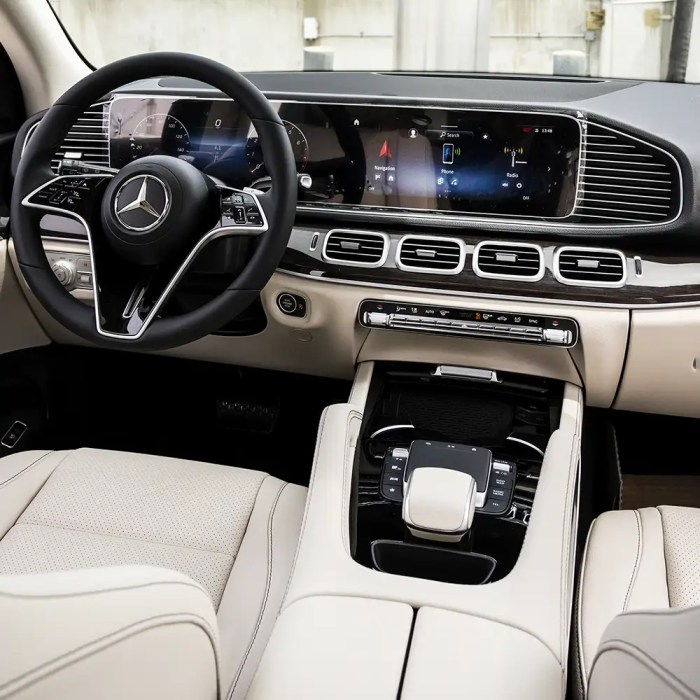
The Mercedes-Benz GLE is engineered with a comprehensive suite of safety technologies designed to provide peace of mind to drivers and passengers alike. With a focus on preventing accidents and protecting occupants, the GLE incorporates advanced systems that reflect the brand’s commitment to safety excellence.Among the notable safety technologies in the GLE are systems like Active Brake Assist, Blind Spot Assist, and Lane Keeping Assist.
These features work in harmony to enhance driver awareness and response during critical situations. The Active Brake Assist, for example, can detect potential collisions and apply the brakes autonomously if the driver fails to react in time. This proactive approach significantly reduces the risk of rear-end collisions, showcasing the vehicle’s dedication to occupant safety.
Crash Test Ratings
The GLE has undergone rigorous testing by reputable safety organizations, receiving high marks for its protective capabilities. The National Highway Traffic Safety Administration (NHTSA) and the Insurance Institute for Highway Safety (IIHS) conduct comprehensive evaluations to assess vehicle safety. The GLE consistently achieves top ratings across various categories, indicating its robust construction and effective safety systems.For instance, the GLE has received a five-star overall safety rating from the NHTSA, reflecting its outstanding performance in crash tests.
The IIHS also recognizes the GLE for its superior crashworthiness, providing it with the coveted Top Safety Pick+ designation. These ratings confirm the vehicle’s ability to safeguard its occupants in the event of an accident.
Advanced Driver-Assistance Systems
The GLE is equipped with an array of advanced driver-assistance systems (ADAS) that enhance driving convenience while prioritizing safety. These systems not only assist in avoiding potential hazards but also promote a more enjoyable driving experience by automating certain driving tasks. Several key ADAS features in the GLE include:
- Adaptive Cruise Control: Maintains a set speed and distance from the vehicle ahead, adjusting speed as necessary to ensure a safe following distance.
- Active Lane Change Assist: Facilitates safe lane changes by using sensors to monitor surrounding traffic and gently nudging the vehicle into the adjacent lane when safe.
- Traffic Sign Assist: Displays road signs on the dashboard, helping drivers stay informed about speed limits and other important regulations.
- Surround View System: Offers a 360-degree view of the vehicle’s surroundings, which aids in parking and maneuvering in tight spaces.
These advanced features contribute to a safer driving environment, allowing drivers to focus on the road while receiving timely alerts and assistance as needed. By integrating state-of-the-art technologies, the GLE exemplifies how modern vehicles can combine luxury and safety seamlessly.
Comparison with Competitors
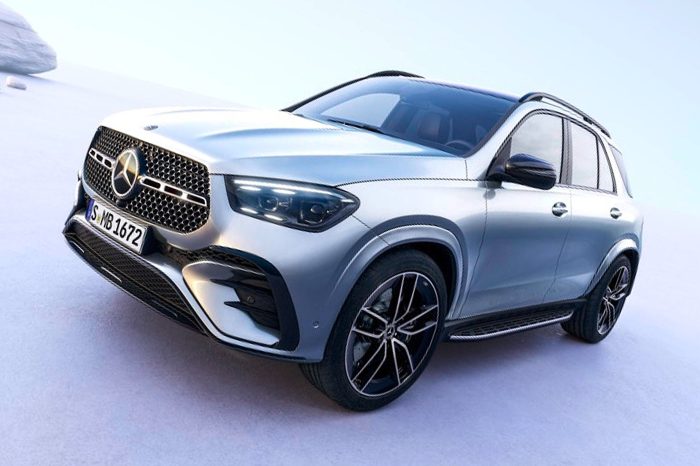
The Mercedes-Benz GLE stands tall in the luxury SUV market, but it faces stiff competition from several notable rivals. Brands such as BMW, Audi, and Lexus offer compelling alternatives that challenge the GLE in aspects like pricing, features, and performance. Understanding how the GLE stacks up against these competitors can provide valuable insights for potential buyers seeking the best luxury SUV for their needs.
Competitor Analysis
In comparing the GLE with its top competitors, it’s essential to consider various factors including pricing, performance specifications, interior features, and customer feedback. The following brands are often seen as the GLE’s primary rivals:
- BMW X5: The X5 offers a dynamic driving experience, with a range of powerful engines and a sporty demeanor. Its interior boasts high-quality materials and a user-friendly technology suite, making it a favorite among driving enthusiasts. Pricing for the X5 typically starts slightly lower than the GLE, attracting buyers looking for performance without breaking the bank.
- Audi Q7: Renowned for its spacious cabin and advanced technology, the Q7 provides a comfortable ride with an emphasis on practicality. The standard all-wheel drive enhances its appeal in various driving conditions. However, while it excels in space and features, its engine options may not match the GLE’s performance levels. Pricing is comparable, but the value proposition may lean towards the more spacious Q7 for families.
- Lexus RX: The RX is known for its reliability and plush ride quality. It features a hybrid variant that is appealing for eco-conscious consumers. Although the GLE may offer more robust engine choices and a sportier feel, the RX excels in user satisfaction and dependability. Its pricing is often more accessible, making it an attractive option for those prioritizing value.
Customer feedback highlights the GLE’s luxurious interior and advanced safety features as major strengths. However, some reviews suggest that its infotainment interface can be less intuitive compared to competitors, which may deter tech-savvy buyers. Additionally, while the GLE’s performance is impressive, some drivers find the BMW X5 to offer a more engaging driving experience.
“The GLE impresses with its blend of luxury and performance, yet competitors like the X5 and Q7 have distinct advantages that cater to specific preferences.”
As each competitor brings unique strengths to the table, prospective buyers are encouraged to explore their options closely. The choice between the GLE and its rivals ultimately comes down to individual priorities—whether that be performance, technology, comfort, or value.

